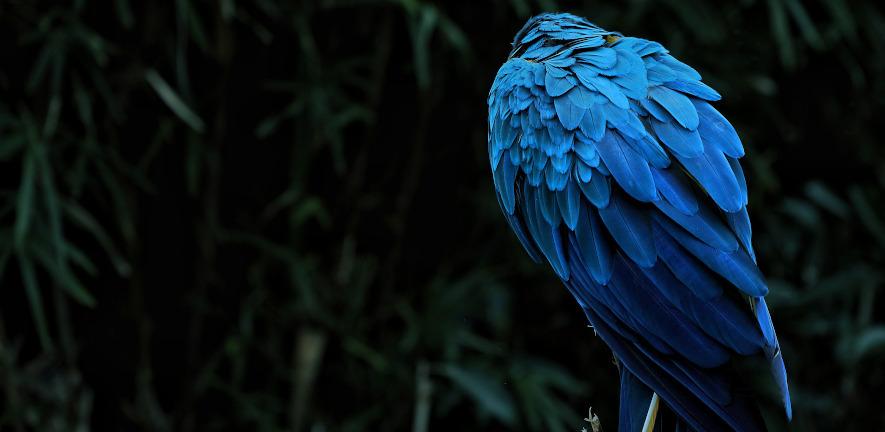
Structural colour, which is seen in some bird feathers, butterfly wings or insects, is not caused by pigments or dyes, but internal structure alone. The appearance of the colour, whether matt or iridescent, depends on how the structures are arranged at the nanoscale.
Ordered, or crystalline structures result in iridescent colours, which change when viewed from different angles. Disordered, or correlated structures result in angle-independent matt colours, which look the same from any viewing angle, and produce some of the most intense colours in nature.
Researchers from Dr Silvia Vignolini's research group used a numerical experiment to determine the limits of matt structural colour, and found that it extends only as far as blue and green in the visible spectrum. The results, published in PNAS, could be useful in the development of non-toxic paints or coatings with intense colour that never fades.
“In addition to their intensity and resistance to fading, a matt paint which uses structural colour would also be far more environmentally-friendly, as toxic dyes and pigments would not be needed,” said first author Gianni Jacucci. “However, we first need to understand what the limitations are for recreating these types of colours before any commercial applications are possible.”
“Most of the examples of structural colour in nature are iridescent – so far, examples of naturally-occurring matt structural colour only exist in blue or green hues,” said co-author Lukas Schertel. “When we’ve tried to artificially recreate matt structural colour for reds or oranges, we end up with a poor-quality result, both in terms of saturation and colour purity.”
So the researchers used numerical modelling to determine the limitations of creating saturated, pure and matt red structural colour. They modelled the optical response and colour appearance of nanostructures, as found in the natural world. They found that saturated, matt structural colours cannot be recreated in the red region of the visible spectrum, which might explain the absence of these hues in natural systems.
“Because of the complex interplay between single scattering and multiple scattering, and contributions from correlated scattering, we found that in addition to red, yellow and orange can also hardly be reached,” said Vignolini.
Despite the apparent limitations of structural colour, the researchers say these can be overcome by using other kinds of nanostructures, such as network structures or multi-layered hierarchical structures, although these systems are not fully understood yet.
Reference
Gianni Jacucci et al. ‘The limitations of extending nature’s colour palette in correlated, disordered systems.’ PNAS (2020).
This article has been adapted from the story which originally appeared on the University of Cambridge research pages, written by Sarah Collins.

